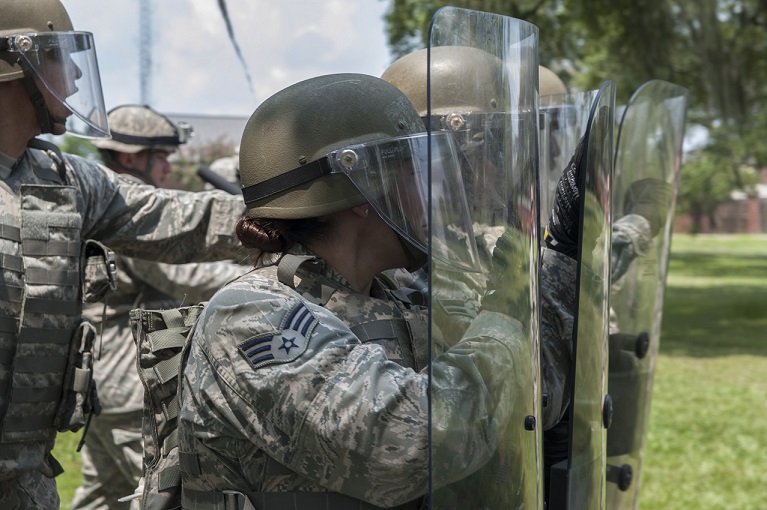
This post is also available in:
 עברית (Hebrew)
עברית (Hebrew)
Rubber bullets and tear gas are not the only nonlethal weapons available in dispersing illegal demonstrations. The US Marines have been recently testing a new crowd control system. The Corps’ Joint Nonlethal Weapons Directorate is currently testing an 81mm mortar round that delivers a shower of flashbang grenades to disperse troublemakers.
Marine Col. Wendell Leimbach Jr., director of the Joint Nonlethal Weapons Directorate, says intermediate force capabilities are needed more than ever to deal with threats that show up in humanitarian assistance, disaster relief, — scenarios that are just below armed conflict and often referred to as “gray zone” operations, according to military.com.
Nonlethal capabilities are also needed when military units transition from high-intensity combat to stabilization efforts.
Another tool under development is the Radio Frequency Vehicle Stopper. It can be used at roadblocks and checkpoints to disable vehicles. It is designed to use radio-frequency electromagnetic waves to interfere with the electronics of the target engine.
The Corps is also continuing to work on a “Solid-State Active Denial Technology” to disrupt hostile crowds without causing “permanent physical harm.” It relies on radio frequency millimeter waves at 95 GHz traveling at the speed of light to create a “brief intolerable heating sensation on the person’s skin,” Marine officials said.
Active-denial systems have been scrutinized in the past by critics who questioned whether they can cause permanent harm. Having a person in the loop at all times and adding features such as automatic shutoff after a few seconds will limit exposure and make it safer to use, officials said.
81mm flashbang munitions, which are currently in the test phase, are designed to deliver 14 flashbangs on a target to warn or move individuals and suppress potential threats.

























